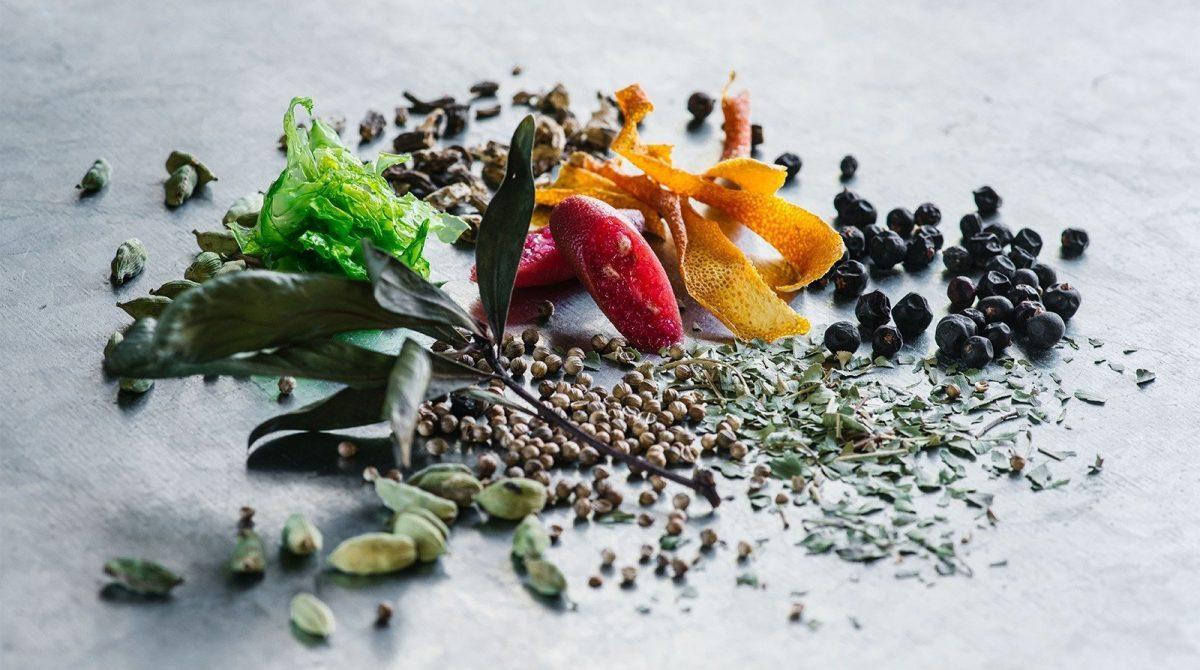
Gin botanicals in a recipe may vary for many different reasons.
The master distiller's choices to find his/her own recipe of botanicals vary according to the organoleptic profile and the desired aromas, also varying the production process.
Master distillers often go through trial-and-error processes and experimentation to get the ideal concentration for the final product. In this article, we will start with a definition of gin and then discuss the most common botanicals used in gins.
Index
- A definition of gin
- The 4 most common gin botanicals
- Juniper
- Coriander
- Citrus
- Gage root
- Licorice
- Cardamom
- Angelica
- Cassia bark
A definition of gin
EU regulation 2019/787 is very detailed regarding gin production: a drink can only be called "gin" if its production involves flavoring ethyl alcohol of agricultural origin. This alcohol needs to have a specific organoleptic balance and an initial alcoholic strength of 96% ABV. Also, among the botanicals, juniper needs to be the main one. It’s also possible that a gin is obtained by adding essences or aromas to ethyl alcohol - the so-called "compound gin".
Let us start by introducing the four main gin botanicals, namely: juniper berries, coriander seeds, citrus fruit peels, and orris root.
The 4 most common gin botanicals
1) Juniper Berries
Juniper berries are the core of gin. They have been historically used for medical purposes: moreover, it is believed that the first gins were designed as cures, but actually, only their diuretic effect has been confirmed by science.
Among the 70 species of juniper we know, only 10 are used in gin production, with a strong predominance of Juniperus communis (common juniper).
The oily part of juniper berries, as in any other botanical, is the one that carries the organoleptic profile. This oily part is mainly made by terpenic hydrocarbons such as α and β-pinene - the same aromas of pine - as well as myrcene, which is also present in hops. Then we have limonene, typical in citrus fruits, and sabinene, like in black pepper. At least 50% of most of the recipes are made of Juniper berries. For every liter of 50% ABV alcohol loaded in the still, it takes between 10 and 30 g of botanicals. Of that 10 - 30 g, juniper usually makes up at least 50% or more, and this varies according to the recipe and the producer.
But what is the origin of this botanical? Most of the common juniper used in culinary production and distilling comes from Eastern Europe, with small variations in the amount of terpene due to the area’s specifics.
Juniper is mostly harvested in the wild, which gives crops of berries of different ages and shapes: black and purple soft and ripe, the older ones, and hard and green the new ones.
When juniper berries arrive at the distillery, it is necessary to make sure they are homogeneously matured and hard enough to be crushed between your fingers.
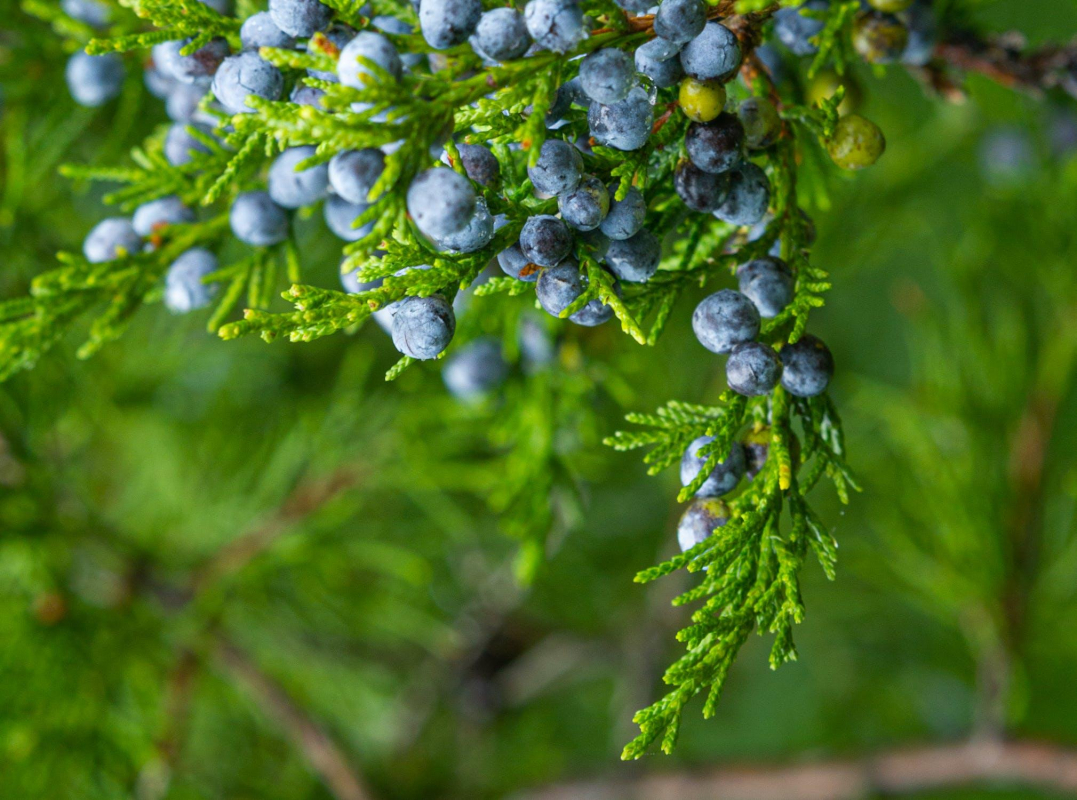
Conservation of juniper berries
Juniper berries do not always come vacuum-packed. Therefore, it is necessary to put them in their ideal storage conditions as soon as possible: the ideal temperature is 4-12°C (39-44°F), and relative humidity is 50-75%.
In any case, berries should be used in production as soon as possible.
Pay attention: some varieties of juniper, such as Sabina juniper, are poisonous and should be avoided.
2) Coriander
Coriander seeds are the second most used element in gin. They are rich in terpenes such as linalool and pinene, with a lemony taste. In the greatest number of recipes, it lightens and balances the juniper’s robustness.
Plants coming from warmer countries usually have larger seeds and a lower content of volatile oil (up to 0.4%), whereas smaller seeds contain up to 1.8%.
The floral scent of this volatile oil (whose main component is linalool) is highly sought after and in combination with the other volatiles present in coriander seeds creates the aroma of citrus fruits and flowers.
Sometimes, coriander leaves are also used, but to a lesser extent than seeds.
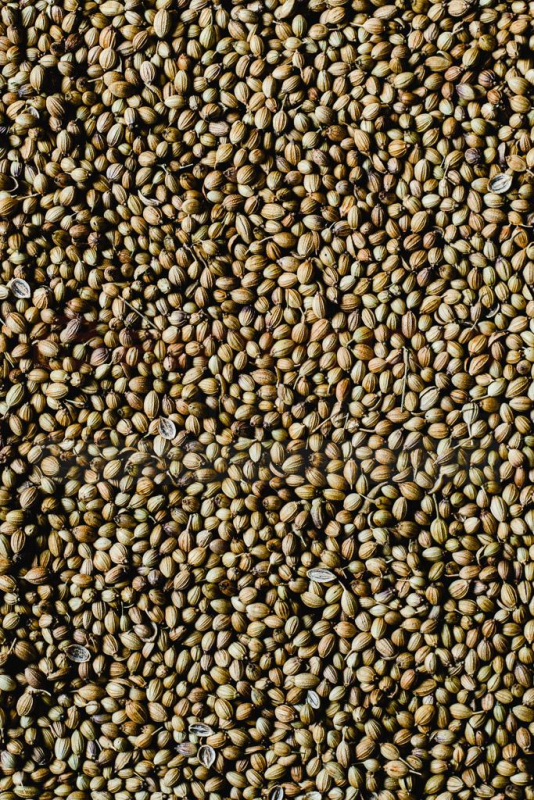
3) Citrus fruits
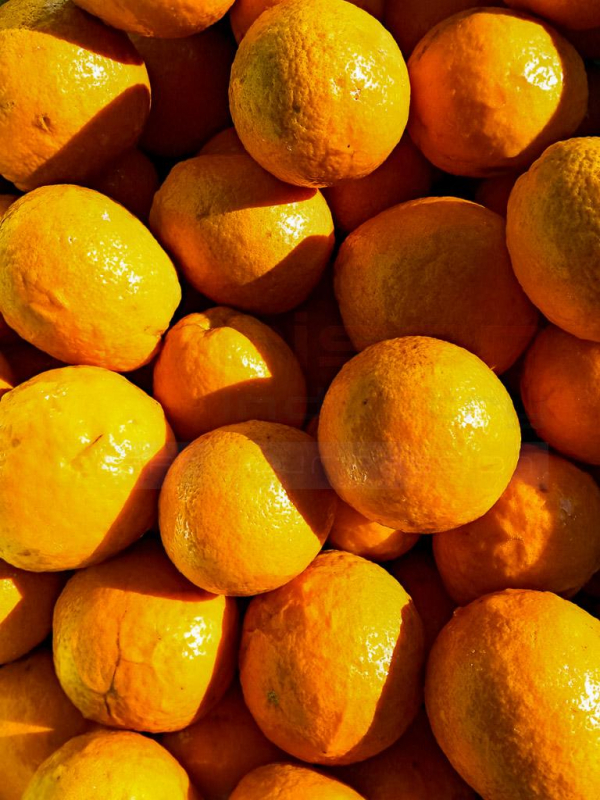
As gin botanicals, we mainly use dried peels of lemons and oranges (bitter or sweet), and sometimes also lime and grapefruit, with an average quantity of about 10% of the total content of juniper.
Citrus peel has many parts (starting from the outside: exocarp, metacarp and endocarp), but the most important one for distillation is certainly the exocarp: here we have the greatest amount of oily substances (limonene, linalool, myrcene, α and β-pinene) and here we find the characteristic aroma of all citrus fruits.
The harvesting of citrus peels for the gin industry is done manually by workers or by specific machines: they both peel the exocarp in a single strip and then let it dry in the sun. Once dried, these strips are ground into flakes (the most common method) or powder.
4) Iris Root
Derivata dall’Iris Germanica o Iris Pallida, la radice di giaggiolo ha un aroma floreale e leggermente legnoso, ma è per lo più utilizzata come stabilizzatore dei composti volatili in una miscela.
Questa radice viene usata principalmente perché è in grado di rendere meno volatili gli altri odori. Questo effetto, dovuto all’irone, si attiva solamente dopo aver essiccato il rizoma almeno un paio d’anni.
L’irone è un olio essenziale dal caratteristico profumo di violetta che entrò a far parte, come correttivo, in moltissime preparazioni farmaceutiche e in alcuni dentifrici.
5) Other botanical substances worthy of note
Licorice
Glycyrrhiza glabra root is a very ancient sweetener, thanks to its high content of glycyrrhizin, having 30-50 times the sweetness of sucrose.
A small percentage of licorice gives the gin a pleasant aftertaste of anethole, the same compound as fennel and aniseed.
Cardamom
Cardamom seeds come from the pods of the plant Elettaria cardamomum and are widely used in India and the Middle East. Green cardamom, the most widely used in gin production, has a stinging and resinous aroma, while black cardamom (Amomum subulatum) is smoky and slightly mentholated.
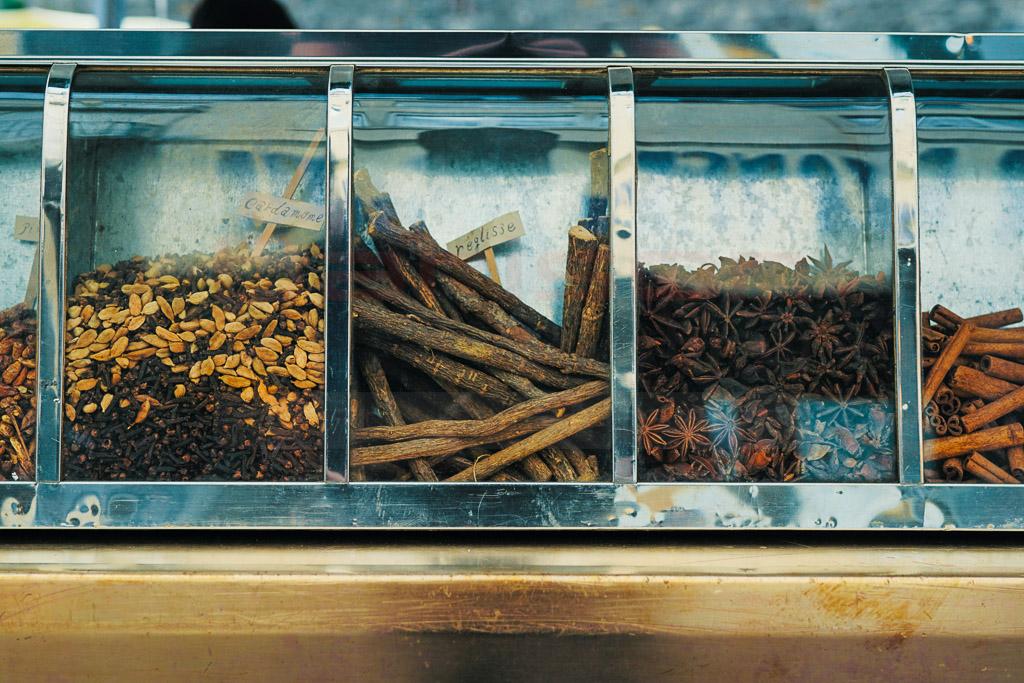
Angelica
Among the most common botanicals, we have Angelica, used for its root, but sometimes also seeds and flowers. It is a group of plants native to temperate regions of the Northern hemisphere.
The quantities commonly used for gin are low, therefore their aroma of herbs, earth and wood is hard to be detected. As with the orris root, it is mainly used because it gives stability to the distillate.
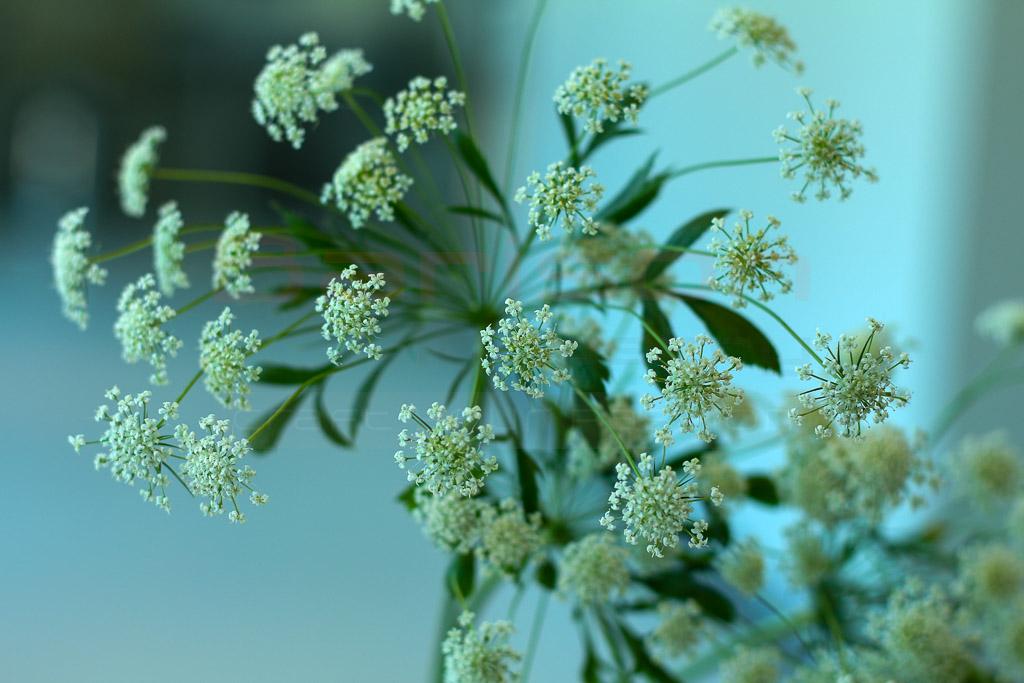
Cassia bark
Cassia bark - mostly found in Sri Lanka - is not only related to cinnamon but is also known as "Chinese cinnamon".
The production of Cassia bark involves peeling strips of bark from the tree and drying them. Its specific aroma, very similar to cinnamon, is due to the cinnamaldehyde which constitutes about 90% of the volatile fraction of the oil.
Cassia has a strong aroma, penetrating, without cinnamon typical sweetness. It is used in gin to give a spicy note.
